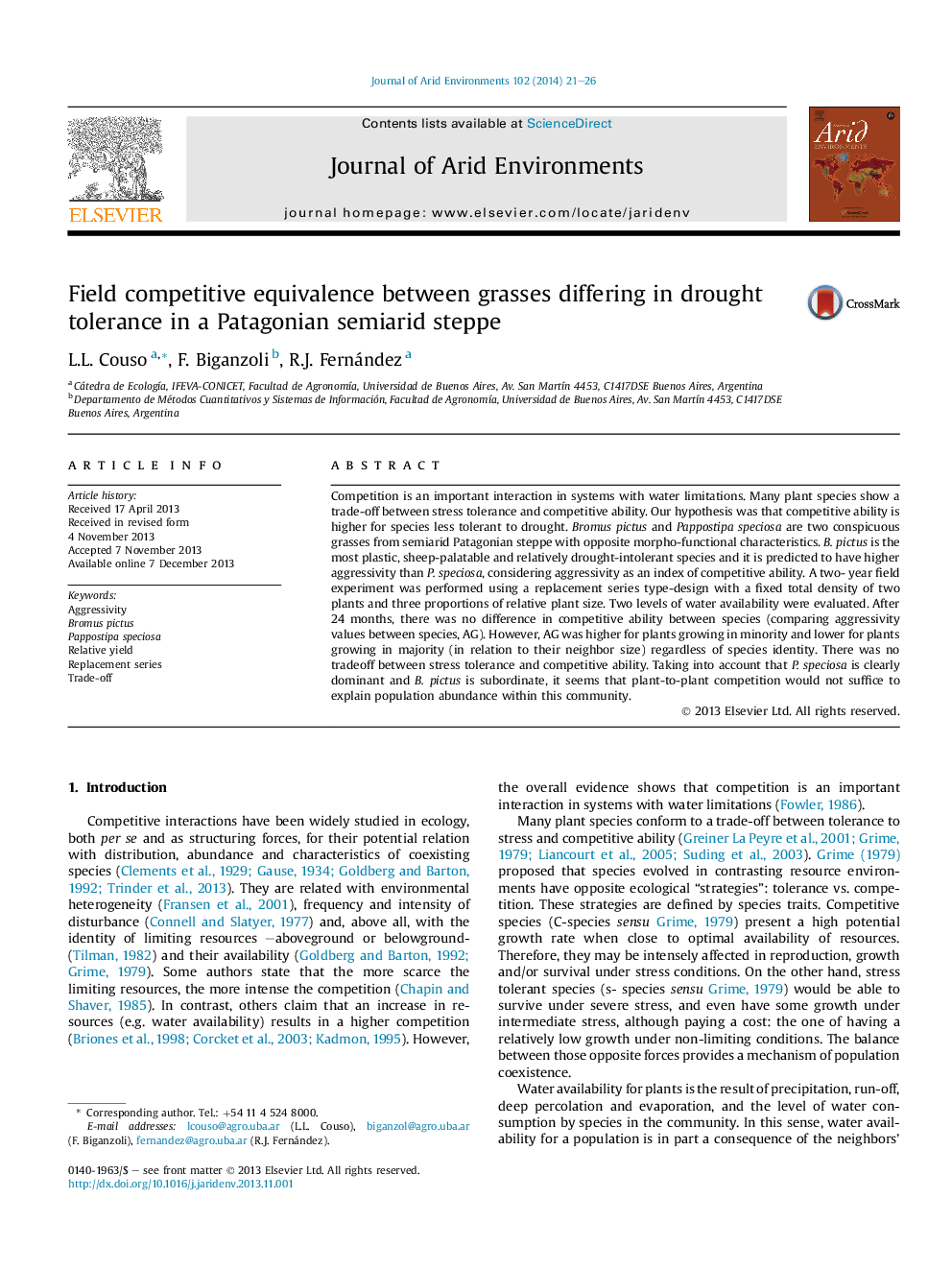| Article ID | Journal | Published Year | Pages | File Type |
|---|---|---|---|---|
| 4393034 | Journal of Arid Environments | 2014 | 6 Pages |
•Two coexisting grasses showed different stress tolerance but similar competitiveness.•Intraspecific competition was larger for the species in minority.•Interspecific competition was larger for the species in majority.•When in minority, both species tended to overcompete its neighbor.•An ‘alien’ neighborhood is less aggressive for the species in minority.
Competition is an important interaction in systems with water limitations. Many plant species show a trade-off between stress tolerance and competitive ability. Our hypothesis was that competitive ability is higher for species less tolerant to drought. Bromus pictus and Pappostipa speciosa are two conspicuous grasses from semiarid Patagonian steppe with opposite morpho-functional characteristics. B. pictus is the most plastic, sheep-palatable and relatively drought-intolerant species and it is predicted to have higher aggressivity than P. speciosa, considering aggressivity as an index of competitive ability. A two- year field experiment was performed using a replacement series type-design with a fixed total density of two plants and three proportions of relative plant size. Two levels of water availability were evaluated. After 24 months, there was no difference in competitive ability between species (comparing aggressivity values between species, AG). However, AG was higher for plants growing in minority and lower for plants growing in majority (in relation to their neighbor size) regardless of species identity. There was no tradeoff between stress tolerance and competitive ability. Taking into account that P. speciosa is clearly dominant and B. pictus is subordinate, it seems that plant-to-plant competition would not suffice to explain population abundance within this community.
